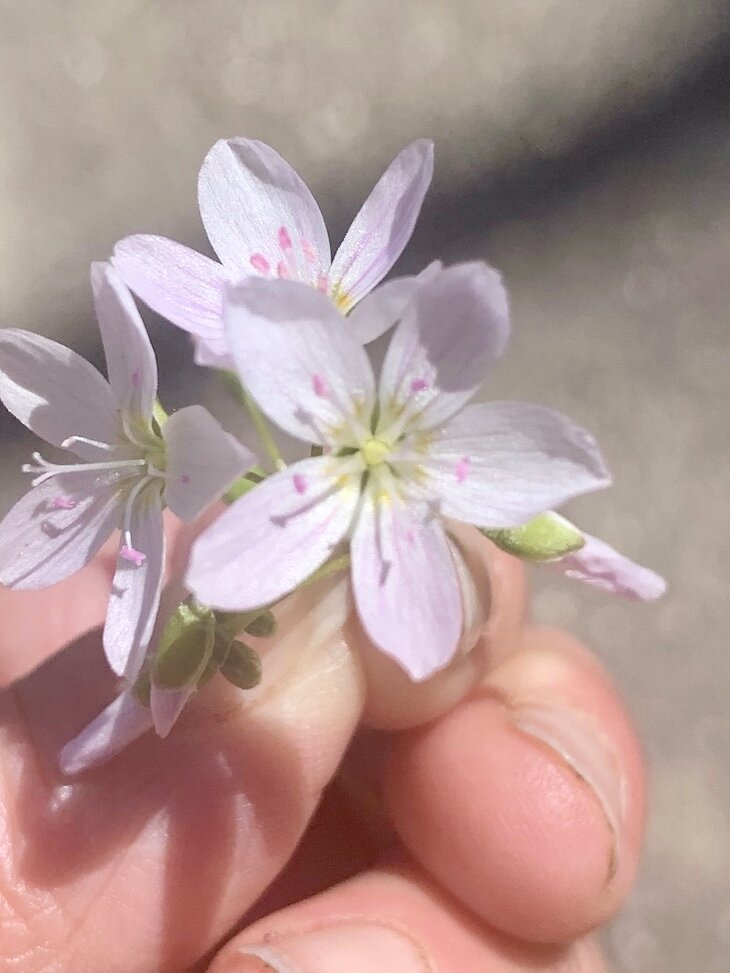Flower Power
"Look, look! Come see what is inside this flower!" It's a warm spring day and our friends are scattered around the yard, discovering all that new surprises that have popped up over night. After what seems like days, the flowers are finally showing all their beauty!
"Is it a bumble bee?" I ask. They look at me with big eyes of wonder. It's been many months since we have had flowers and their young brains may not have retained that bit of information. "Sometimes bees go to the flowers to get nectar. Nectar is like a little energy drink for the bees."
"Nooooo! It's black!" says Jamison. A group of friends gather around to take a closer look at the flower. We have just formed our curriculum for the day; or at least for the moment. We have a bit of science, exploring and understanding the world around us. We have math, counting and discussing attributes, and taking parts and joining them into a whole. We have language as we are going to introduce a number of new words to their vocabulary. We have art at our fingertips as we explore the beauty of this flower in all it's budding glory.
The children can show me the leaves and the stems. James shares how soft the flower feels and we talk about the pedals on the flower and how different flowers have different numbers of pedals. We count the pedals. I share that the black pieces are called anthers. This is where the pollen is kept and why the bees like to visit inside our flowers. There is silence as they all investigate the parts of the tulip. "Can we drink the energy juice?" asks Eve, much to the giggles of her friends. Eve smiles. "I think we should leave it for the bees," I suggest.
"The bees will make honey from the nectar!" Four year old Noah, explains. We can eat the honey but we can't eat the nectar!" I see Noah's friends nodding their heads as this makes complete sense to them.
"This flower has five pedals!" I turn around to see our subtilizing queen, Annika, at it again. Subitizing is the ability to “see” a small number of objects and know how many are there without counting. When we roll a dice, we don’t need to count the pips, we know the number when we see it! Some children seem to grasp this concept with an inborn sense of ease while others need to work with it a bit more.
We continue to count the pedals, we find the stem and leaves and we find the anthers again. Individual parts of a flower are not exciting on their own, but when the pieces are put together, they make something more complex, more beautiful. The learning flows from the lips of the young friends as they share insights and ideas, and think out loud as they process all that they are absorbing.
We find the dandelions on the hill and we are again measuring, building our vocabularies and investigating with the field of gold. "Look at how long THIS stem is!" shouts Violet. Measurement, spatial awareness, the math foundation grows as the investigation of our morning continues.
I look over to see Ave in a world of her own. Quietly, splitting the stem into pieces. Ahh, decomposing. Math. Deep exploration, developing an understanding that will make sense in a classroom, years down the road.
This is the learning that makes me smile. This is what learning can look like if we give them time to explore and move and play and figure it out in nature. This is the good stuff that sticks in the brain, like nectar to a flower. The foundation of math that I challenge you to let evolve on their own terms. Give your children the gift of spring. The math and science and language are all outside the door. Enjoy!





